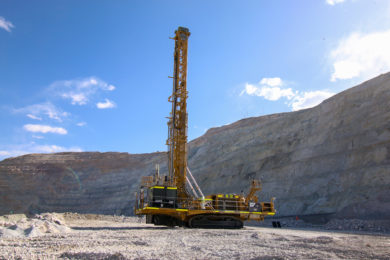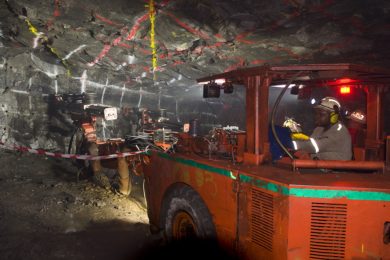In South Africa, where gold extraction can be from 2,400 m below surface (and much deeper at some mines), the virgin rock temperatures can be greater than 50°C. Furthermore, the mining activity creates additional heat that must be reduced. In view of the underground heat rejection limitations and costs in deep mines, the introduction of ice from surface becomes a viable alternative. The latent heat of fusion of the ice provides pure cooling energy.
Each kilo of ice absorbs 334 kJ as it melts, much more than chilled water. Ice is easily conveyed down the main shaft and reaches the 1,800 m level in a matter of seconds. Hence the ice-cooling system reduces the pumping costs at the mine to less than 20 %.
In June 2013, KTI was awarded a first contract to supply two 200 t ice plants and extend an existing surface ice plant at this site a gold mine in the Free State province of South Africa. KTI successfully demonstrated the technical feasibility and the economic viability of the containerised ice plant concept in a very convincing way.
The trial 400 t/d plant was pre-fabricated in record time at the German KTI factory in Balzheim and delivered to site in early November 2013. It was then erected and commissioned in just 10 days. Once the plant was in full production, an average daily production of 440 t/d was achieved.
This successful result led KTI’s South Africa customers to proceed with the second extension phase, adding four new plate ice plants of 1 MW each. They will be supplied along with a new 1.5 MW water chiller, raising the overall capacity at this mine to 3,300 t/d of ice.









